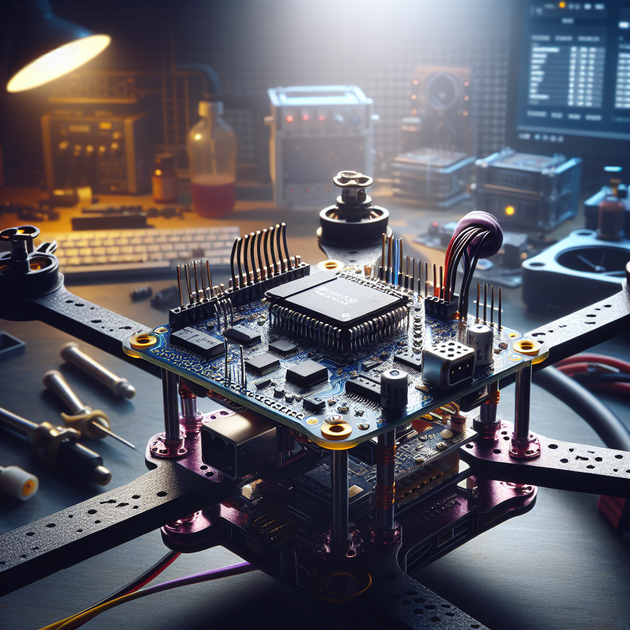Ever wondered if building your own flight controller setup beats sticking with tried-and-true solutions like ArduPilot? Swapping out ArduPilot for a custom F4 flight controller paired with a Raspberry Pi 4 might sound tempting—after all, who doesn’t like more control or flexibility? But is it really an upgrade or just asking for trouble?
Why Consider Ditching ArduPilot?
ArduPilot has long been one of the most popular open-source autopilot platforms for drones and unmanned vehicles. It’s reliable, well-documented, and supports a wide range of hardware. Still, some builders get frustrated with its complexity or want features that aren’t natively supported. That’s where the idea of mixing a custom F4 flight controller (FC) with a Raspberry Pi 4 comes in.
What draws people to this setup?
- More freedom to customize firmware
- Potentially faster processing power with the Pi 4
- Ability to run advanced algorithms or AI onboard
- Hands-on learning and full-stack control
But before jumping in feet first, it’s worth breaking down what this swap really means.
The Appeal of a Custom F4 FC and Pi 4 Hybrid
The heart of this alternative is combining an STM32F405-based board (the “F4” chip) with the versatility of the Raspberry Pi 4. The theory goes that you can offload low-level tasks—like sensor readings and motor outputs—to the microcontroller (F4), while using the Pi for heavy lifting such as computer vision or advanced navigation.
This approach isn’t unheard of. Some advanced hobbyists use similar setups to push boundaries. The PX4 project, for instance, demonstrates how modularity in drone systems can enable more complex applications.
Key reasons pilots consider this path:
- Flexibility: Customize every layer from hardware to software.
- Performance: The Raspberry Pi 4 can handle tasks that would cripple most standard controllers.
- Learning: Building from scratch is the best way to deeply understand drone systems.
The Risks You Shouldn’t Ignore
There’s no sugarcoating it—a DIY approach isn’t all smooth flying. Here are some common pitfalls:
- Reliability: Commercial solutions like ArduPilot have thousands of eyes on their codebase. Your own setup will lack that level of community vetting.
- Troubleshooting: When things go wrong (and they will), expect to spend hours hunting bugs alone.
- Hardware Integration: Syncing sensors, ESCs, GPS modules, and communication between two completely different boards takes serious engineering chops.
- Lack of Documentation: Got stumped? You might not find any forum threads on your exact problem.
- No Plug-and-Play: Forget about quick setup wizards—everything is manual.
A good example is when someone tries integrating object detection using TensorFlow on the Pi while keeping real-time control loops running on the F4. Timing issues can easily lead to crashes—even minor glitches in serial communication may cause catastrophic failures mid-flight.
Anecdote From the Field
A friend once decided to build a mapping drone using an STM32F405 board with a Raspberry Pi for image processing. On paper, it looked brilliant—simultaneous mapping and autonomous flight! But after weeks wrestling with odd I2C errors and random SD card disconnects on bumpy landings, he finally went back to using an off-the-shelf Pixhawk running PX4. The reason? He needed his weekends back—and spending them debugging low-level drivers wasn’t fun anymore.
Main Takeaways Before You Swap
So should you ditch ArduPilot for a custom F4 FC and Pi 4 hybrid? Here’s what matters most:
- If your goal is maximum reliability or rapid deployment—stick with proven platforms like ArduPilot or PX4.
- If you love tinkering and want total control over your stack—this DIY route might be rewarding.
- If your project requires real-time performance plus high-level computation (say AI + fast control loops), expect a steep learning curve.
- If support and documentation are must-haves—you’ll be better off with established solutions.
For many users, starting with something like ArduPilot, then gradually experimenting on spare setups is less stressful than going fully custom from day one.
Your Turn—Would You Make the Switch?
Building drones is all about trade-offs between flexibility, reliability, and time investment. Some folks thrive on rolling up their sleeves; others just want things to work out-of-the-box. Would you take the plunge into building your own custom hybrid controller—or play it safe with battle-tested options?

Leave a Reply